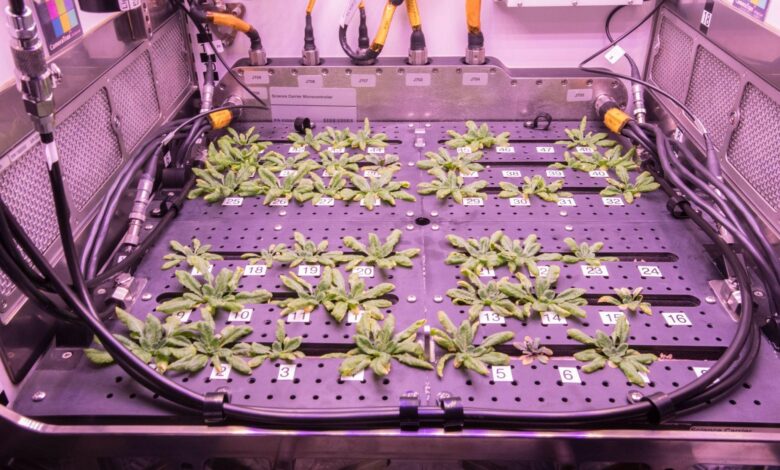Can We Really Grow Plants in Space?

The idea of space farming is not new — experiments with plants in space go on for both practical and scientific reasons. We already have many astronauts who pioneered growing plants and even a garden on the International Space Station (ISS). Growing plants in space helps astronauts remain healthy during longer missions and creates an environment similar to our home planet.
Obviously, there are challenges — namely, getting plants to grow in no-gravity surroundings because low gravity has a negative effect on root development. Besides, beyond our planet, there wouldn’t be enough light either. As a result, the roots would not receive enough nutrients, and their biogeochemical cycles would not happen properly either. Next, microbiological interactions between soil-based substrates are also very complex. However, this doesn’t mean space farming in micro- and hypo-gravity is impossible.
Have Astronauts Grown Plants in Space Before?
Astronauts have previously grown plants in space, so space biology is not impossible. In fact, the ISS holds the Vegetable Production System or Veggie. Its purpose is to study how plants grow in microgravity, so astronauts can have fresh food and enjoy more aesthetic surroundings. The veggie is a small green batch that can hold a total of six plants. They grow in pillows with fertilizers and clay-based media for growth. These pillows are important for distributing nutrients, water, and the air around roots.
And then, there’s the Advanced Plant Habitat (APH), which is a bit like Veggie. The only difference is that APH is more like a growth chamber where astronauts can research the space environment for plants. This habitat uses LED lights, while seeds reside in a porous substrate of clay that delivers nutrients, oxygen, and water to their roots. Besides, the APH is enclosed and features automated cameras and over 180 sensors that a team grounded at Kennedy interacts with. So, APH doesn’t need the crew to constantly supervise and operate it.
Are There Any Plants in Space?

Yes, Veggie and APH are currently growing space plants, while astronauts and people on Earth are working hard to improve these systems. They oversee what’s going on and make changes when necessary. In fact, APH will be the first system to provide a background for many important studies on space agriculture. Both Veggie and the APH proved to be very important projects in this direction.
Learning more about how space plants grow will help botanists understand how they can grow food in drought conditions and much more. Besides, it can teach them how to adopt large-scale automated systems for growth in areas where no naturally arable soil exists. Studying this helps us advance our understanding of the space agriculture field. After all, future exploration would involve growing food on other planets as well, not only on space stations or aboard ships.
Which Plants Grow in Space?
So far, astronauts have successfully grown many plant varieties on the ISS, including Chinese cabbage, three lettuce types, Russian kale, Zinnia flowers, and mizuna mustard. Astronaut Scott Kelly was especially passionate about flowers. He even photographed a bouquet floating in the ISS’s cupola. Some crew members even harvested the plants that they grew. And since studying these plants is very important, too, they sent the remaining samples to Earth.
The Kennedy Space Center envisions growing more cultures, such as peppers and tomatoes. And they also plan to add beans or other foods rich in antioxidants to the list too. What they need to focus on the most is providing protection for the plants against space radiation. There are wheat, Arabidopsis, radish, and peppers in the APH environmentally controlled chamber. The first plant to have ever flowered in space is the Arabidopsis.
Do Plants Grow Faster in Space?
Comparisons regarding how fast plants in space grow are still uncertain. Experiments have shown that some cultures grow very well out there, preferring the same lighting conditions as vegetation on Earth. It’s not necessary to have green lights to ensure growth, but astronauts still use these lights to create conditions similar to the environment on Earth. But to better understand how fast space plants grow, you should understand how gravity influences this process.
In a nutshell, gravity pulls vegetation roots down and helps with stem orientation. At the same time, the light keeps on drawing the stem in an upward direction. And since in space there is no gravity and not enough light, plants don’t know just where they can grow. Some studies concluded that plants grow more rapidly in microgravity environments, but this insight does not always effective and largely depends on the culture. However, we’ve already managed to achieve a lot in space food growing direction and will certainly continue to come up with new plant cultivation ideas.



